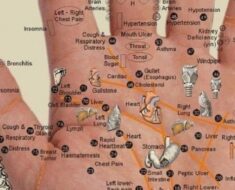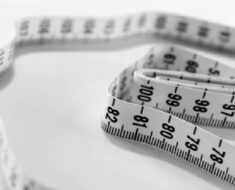
Wondering what to look for when on the keto diet?
Here are 9 signs and symptoms of ketosis. You might be in ketosis and not even know it!
The ketogenic diet is becoming increasingly more popular due to its ability to effectively help with weight loss.
All of the benefits associated with keto are thanks to the body’s news and improved energy source, ketones (we normally run on glucose).
In order to change the type of fuel your body uses, you first have to restrict carbohydrate intake and burn off extra glucose in your system.
Once you’ve done this and your ketone levels are sufficient, your body will enter the natural metabolic state of ketosis and start burning fat for fuel.
But how do you know if you’re in ketosis or not?
Since it can be comforting to know that all your hard work has finally paid off getting into ketosis, you should keep an eye out for these 9 common signs and symptoms of ketosis.
Ketosis Signs and Symptoms To Look Out For
When your body has reached ketosis and turned from a sugar burner to a fat burner, you will experience some, if not all, of these symptoms of ketosis.
These ketosis signs and symptoms are a great way to help you determine when you’ve entered that fat-burning state.
1. Weight Loss
People often start the keto diet in hopes of shedding those stubborn pounds that are still hanging around.
One of the most welcome symptom of ketosis is sudden weight loss.
But don’t let that fool you – it doesn’t necessarily mean it’s all from fat.
When first starting the keto diet and entering into ketosis, the initial weight loss you may experience is from water weight.
Since carbs are stored with water and you’re restricting carbohydrates to deplete your glycogen stores, you’re no longer holding onto as much water.
As a result, you’ll notice sudden weight loss in the form of water weight.
This is why dehydration is a common side effect of the keto diet.
As long as you’re following the keto diet guidelines and remain in a caloric deficit, you’ll start losing body fat more consistently after the initial drop in water weight.
2. Increased Mental Focus & Energy
Think of these signs – mental focus and energy – as the rainbow after the storm.
When first starting a low carb diet, it’s not uncommon to experience brain fog, fatigue, and feeling sick.
This is known as the keto flu and is a result of your body adapting to running on ketones instead of glucose.
During this transition, you may experience symptoms of the keto flu, but it’s not permanent and will pass shortly.
Once it’s over, you’ll notice an increase in brain function, mental focus, and energy since ketones are an extremely powerful source of energy for the brain.
3. Decreased Hunger
Not feeling hungry all the time is an amazing feeling (or lack thereof).
The answer isn’t fully clear here as to why your hunger gets suppressed on the keto diet, but there are a few suggestions.
One potential reason for this is the lack of processed and refined foods eaten on the keto diet, as most of these come from carbs.
The majority of carbohydrates we consume these days are simple carbs from overly processed and refined grains, as opposed to complex carbs like fruits and vegetables.
Simple carbs lack nutrients and are easily digested, giving you a quick burst of energy and then hunger again shortly after, whereas complex carbs are full of nutrients and dietary fiber that sustain you longer.
Since you can’t eat simple carbs like bread and cereal on the keto diet, you’re instead consuming more natural foods for balanced meals that keep you full longer.
Another speculated reason for a lack of appetite is due to an increase in protein consumption, which is known to increase satiety or the feeling of being full.
So if you’re eating balanced meals and focusing on healthy macronutrient sources, chances are you’ll experience a suppressed appetite when you’re in ketosis.
4. Bad Breath
A common symptom of ketosis many people experience is bad breath in the morning that usually has a fruity smell to it.
It’s caused by elevated levels of acetone, a ketone that’s excreted through your breath and urine.
To keep bad breath at bay, brush your teeth regularly and chew on sugar-free gum (make sure to check carb content!).
Luckily, this is only a short term side effect that should subside shortly.
5. Digestive Problems
If you’re new to keto, chances are you’re going through a major change in diet.
As with any new diet, you may experience digestive issues at the beginning, namely, constipation and diarrhea.
The easiest way to minimize these symptoms of ketosis is to be mindful of what you’re eating. You may have an intolerance or sensitivity to certain foods you didn’t eat before that could be causing the upset.
You should also be mindful of eating a healthy, balanced diet so your body still gets the proper nutrients it needs.
Include healthy doses of low-carb fruits and vegetables in your meals and aim for healthy protein and fat sources.
Don’t just eat bacon, cheese, and heavy meals all the time. That’s one of the easiest ways to get burnt out when following the keto diet.
6. Temporary Fatigue
Yes, one common symptom of ketosis is increased energy, but temporary fatigue is also possible.
As mentioned above, you’re forcing your body to transition from running on glucose, the energy source it’s been using all your life, to running on ketones.
As much as we want it to, this change doesn’t happen overnight, and it can take anywhere from 7-30 days until you’re in full ketosis.
7. Temporary Decrease in Performance
Due to a lack of carbohydrates, you will most likely experience low energy levels that can decrease athletic performance.
In addition, the reduction in your muscle’s glycogen stores means there’s less glucose to fuel your muscles during your workout, thus leading to underperformance.
As with the other symptoms of ketosis, your performance will go back to normal within a few weeks and you’ll be able to smash your workouts again.
8. Difficulty Sleeping
Sometimes during the initial stages of ketosis, people tend to have difficulty sleeping.
If you’ve noticed a change in your sleep quality, whether it be trouble sleeping or waking during the night, it may be due to ketosis.
This symptom of ketosis usually subsides within a few weeks at most, and you may even sleep better than before starting the keto diet, as many others have.
9. Increased Ketone Levels
One of the most obvious telltale signs you’re in ketosis is the increase in your ketone levels.
The most common way to monitor ketone levels is with urine test strips.
Using a blood glucose meter is more expensive, especially if you test too frequently, but it will give you better results.
While you can tell fairly well if you’re in ketosis based on the 8 signs and symptoms above, it’s always reassuring to know for sure which level of ketosis you’re in based on a reading.
Here’s how to read your ketone levels.
Don’t Sweat It
With a little help from these signs and symptoms of ketosis, you’ll be able to tell when you’ve finally reached that fat-burning state.
You may experience some of these symptoms of ketosis or you may experience all of them. It’s different for everyone.
As long as you’re consistently following the ketogenic diet low-carb, high-fat guidelines, you shouldn’t have a problem reaching ketosis and staying there.
Good luck, and don’t sweat it!





